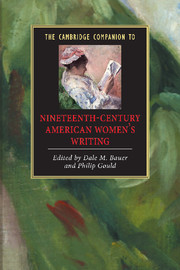Conclusion
Published online by Cambridge University Press: 28 May 2006
Summary
Anyone who is not familiar with the scholarship of the decades following World War Two will find it difficult to imagine that there once was a time when the categories “woman” and “women” were entirely absent from the literature. Until literary critics and cultural historians challenged the canonical and theoretical premises of ColdWar America, the only writing that mattered trafficked in the male quest for authenticity. Women and their writing were either ignored or, if acknowledged at all, consigned to the “other.” Of course, that “other” was the “feminine,” which literary critic Fred Lewis Pattee damned as “fatuous, fevered, furious, fertile, feeling, florid, furbelowed, fighting, and funny.” Pattee’s dismissal in his landmark The Feminine Fifties did more than display a predilection for alliteration. In the decades following its publication in 1940, many a scholar took pleasure in delivering similar judgments, albeit without the alliteration. Nina Baym made short work of Pattee and company, exposing their biases in the now classic “Melodramas of Beset Manhood,” which she published in 1981.
- Type
- Chapter
- Information
- Publisher: Cambridge University PressPrint publication year: 2001
- 1
- Cited by

